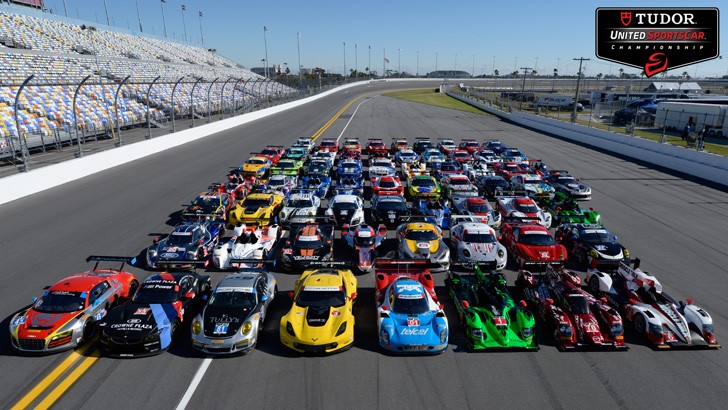We’re still in the midst of the inaugural season of the Tudor United SportsCar Championship season, but the governing body is planning some class structure changes over the couple seasons. The International Motor Sports Association (IMSA) announced changes to its four racing classes that will extend through the 2016 season for improved competition.
All four classes – Prototype, Prototype Challenge, GT Le Mans and GT Daytona – will carry over unchanged for the 2015 season, and the first to see any changes will be the GT classes. In 2016, GT Daytona (GTD) will begin to run FIA GT3 spec racecars, which benefit from traction control, anti-lock brakes and more intense aerodynamic packaging. The competition among the different makes will continue to be balanced using the Adjustment of Performance process that modifies the restrictors and weights of the class entries.
Meanwhile, the 2016 season will also see new regulations for the exciting GT Le Mans (GTLM) class, which includes factory race teams and uses guidelines set up by the ACO. Perhaps the biggest difference between the two GT classes is that GTLM focuses on professional drivers while GTD requires a mix of professional and amateur.
Broader changes to the Tudor USCC series will be noticeable in the 2017 season, where the flagship Prototype class will be overhauled. For this class, an all-new format of racecars will debut, which was jointly agreed upon by IMSA, the Automobile Club l’Ouest (ACO), the governing body behind the 24 Hours of Le Mans, and FIA World Endurance Championship (WEC). Relating to USCC, it will be interesting to see how these new rules play out considering the current Prototype class eliminated LMP1 racecars starting with the 2014 season limits its entrants to a mix of cars from the Daytona Prototypes, LMP2 and the DeltaWing.
Finally, it seems there is a little uncertainty about the spec Prototype Challenge class, which currently runs Chevrolet-powered ORECA FLM09 racecars.
“It is important to all of our stakeholders to have a clear understanding of where the TUDOR Championship is headed from a technical standpoint, which we now have established through 2016. This will enable our manufacturers to build race cars with these specifications and timelines in mind, and allow our competitors to make fully informed investment decisions for the future,” said Scot Elkins, IMSA vice president of competition and technical regulations.
Meanwhile, the 2016 season will also see new regulations for the exciting GT Le Mans (GTLM) class, which includes factory race teams and uses guidelines set up by the ACO. Perhaps the biggest difference between the two GT classes is that GTLM focuses on professional drivers while GTD requires a mix of professional and amateur.
Broader changes to the Tudor USCC series will be noticeable in the 2017 season, where the flagship Prototype class will be overhauled. For this class, an all-new format of racecars will debut, which was jointly agreed upon by IMSA, the Automobile Club l’Ouest (ACO), the governing body behind the 24 Hours of Le Mans, and FIA World Endurance Championship (WEC). Relating to USCC, it will be interesting to see how these new rules play out considering the current Prototype class eliminated LMP1 racecars starting with the 2014 season limits its entrants to a mix of cars from the Daytona Prototypes, LMP2 and the DeltaWing.
Finally, it seems there is a little uncertainty about the spec Prototype Challenge class, which currently runs Chevrolet-powered ORECA FLM09 racecars.
“It is important to all of our stakeholders to have a clear understanding of where the TUDOR Championship is headed from a technical standpoint, which we now have established through 2016. This will enable our manufacturers to build race cars with these specifications and timelines in mind, and allow our competitors to make fully informed investment decisions for the future,” said Scot Elkins, IMSA vice president of competition and technical regulations.

